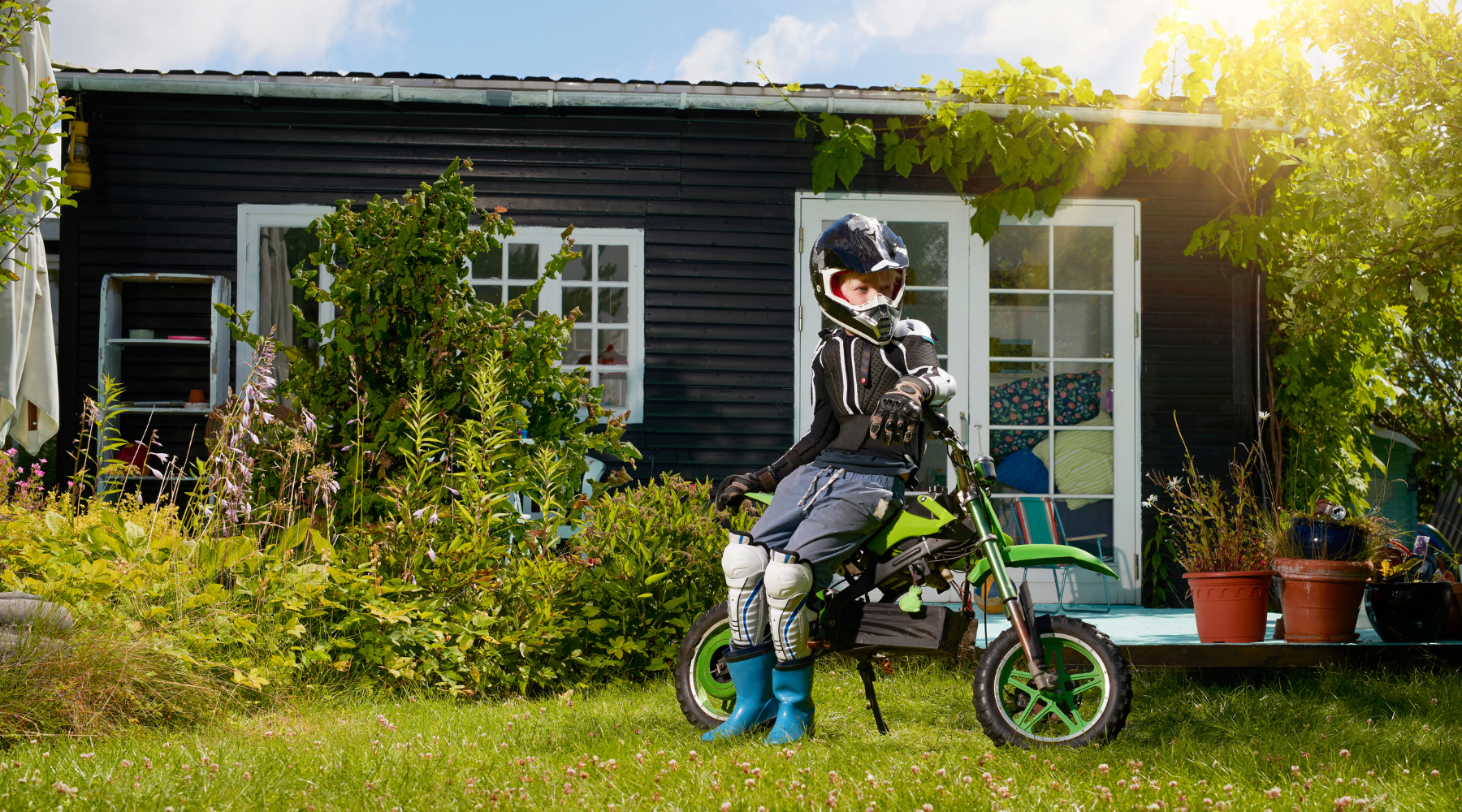In the realm of adventure on two wheels, there exists a captivating world known as "Mini Bikes." These pint-sized machines are redefining the way we experience compact and exhilarating rides. In this article, we'll delve into the fascinating universe of Mini Bikes, uncovering the reasons behind their surging popularity and what makes them truly special.
I. Mini Bike Basics
A. Defining Mini Bikes
The Concept of Mini Bikes
Mini Bikes, often referred to as pocket bikes or minimotos, are diminutive motorized motorcycles designed with one core principle: maximum fun in a compact package. These small-scale two-wheelers share the same DNA as their larger counterparts but come in a size that defies their roaring capabilities.
Mini Bikes vs. Standard Motorcycles
The distinction between Mini Bikes and standard motorcycles lies primarily in size and purpose. While full-sized motorcycles are built for various terrains and transportation needs, Mini Bikes are dedicated to delivering adrenaline-packed thrills on a smaller scale.
B. The History of Mini Bikes
Origins and Evolution
The story of Mini Bikes traces back to post-World War II Europe when resourceful enthusiasts began crafting scaled-down motorcycles for affordable and accessible racing. Over the decades, Mini Bikes evolved from DIY garage projects to commercially produced machines.
Iconic Mini Bike Models
Throughout their evolution, Mini Bikes have seen iconic models emerge, each leaving a unique mark on the world of compact motorcycles. From classics like the Honda Z50 to modern marvels like the Ducati Monster 400, these miniature powerhouses have a rich history.
C. Mini Bike Applications
Recreational Use
The primary purpose of Mini Bikes is recreation. Their compact size and agile handling make them ideal for riders of all ages to enjoy leisurely spins around the neighborhood or spirited rides on closed tracks.
Commercial and Industrial Applications
Beyond recreation, Mini Bikes have found a niche in commercial and industrial settings. They serve as practical tools for tasks like security patrolling in large facilities, where their small size and maneuverability are advantageous.
Mini Bikes in Motorsport
Mini Bikes have also made a significant impact on the motorsport world. Mini bike racing events, both on and off-road, attract passionate competitors who relish the thrill of tight corners and high-speed straights.
II. Types of Mini Bikes
A. Pocket Bikes
Tiny Powerhouses: Pocket Bike Overview
Pocket bikes, often synonymous with Mini Bikes, are compact racing motorcycles designed for both kids and adults. They pack a surprising amount of power into their small frames, making them popular choices for racing enthusiasts.
Racing and Customization
Pocket bikes are a favorite among racing aficionados. Their design allows for customization, enabling riders to fine-tune these machines for maximum performance on the track.
B. Mini Dirt Bikes
Off-Roading Adventures
Mini dirt bikes cater to those who crave off-road excitement. Their rugged design and knobby tires make them perfect for tackling challenging terrains, from dirt trails to motocross tracks.
Choosing the Right Mini Dirt Bike
Selecting the ideal mini dirt bike involves considering factors like rider experience, terrain preferences, and desired performance capabilities. There's a mini dirt bike for every adventurer.
C. Mini Choppers
Cruising in Style
For those with an affinity for custom and cruiser bikes, Mini Choppers offer a unique opportunity to experience the style and elegance of chopper motorcycles in a compact form.
Customization and Personalization
Mini Choppers provide a canvas for personalization. Riders can choose custom paint jobs, unique accessories, and even modify the engine to match their distinct style.
III. Mini Bike Features
A. Engines and Power
Engine Types: 2-Stroke vs. 4-Stroke
Mini Bikes come equipped with either 2-stroke or 4-stroke engines, each with its own set of advantages. 2-stroke engines deliver explosive power, while 4-strokes are known for their reliability and smooth operation.
Engine Displacement and Performance
The size of the engine, measured in cubic centimeters (cc), directly influences a Mini Bike's performance. Smaller engines are ideal for beginners, while larger displacements offer greater speed and power.
B. Mini Bike Frames
Materials and Design
Mini Bike frames are typically constructed from lightweight yet durable materials like steel or aluminum. Their design prioritizes rigidity and maneuverability, ensuring riders can easily navigate tight corners and twists.
Frame Geometry and Handling
The geometry of a Mini Bike's frame plays a crucial role in handling. Factors like wheelbase length, rake angle, and trail impact how the bike responds to rider input, affecting stability and agility.
C. Wheels and Tires
Tire Types: Street vs. Off-Road
Tires are tailored to a Mini Bike's intended use. Street tires provide grip on smooth surfaces, while off-road tires feature aggressive treads for traction on dirt, gravel, and rugged terrains.
Wheel Size and Traction
Wheel size varies among Mini Bikes. Larger wheels offer stability and increased ground clearance, making them suitable for off-road adventures. Smaller wheels enhance maneuverability and agility for street riding.
IV. Riding and Safety
A. Riding Techniques
Mastering the Mini Bike
Riding a Mini Bike requires a unique set of skills. Riders must learn to balance on smaller frames, control throttle response, and navigate tight turns with precision.
Safety Gear Essentials
Safety should be a top priority for Mini Bike riders. Helmets, gloves, knee and elbow pads, and sturdy riding boots are essential gear to protect against potential accidents.
B. Safety Precautions
Mini Bike Maintenance
Routine maintenance is critical for Mini Bikes to ensure optimal performance and rider safety. Regular inspections, oil changes, and proper lubrication are essential tasks.
Riding Responsibly
Responsible riding includes adhering to speed limits, respecting traffic rules, and choosing suitable riding environments. Minibikes should be used in designated areas or on closed tracks to minimize risks.




Leave a comment
This site is protected by hCaptcha and the hCaptcha Privacy Policy and Terms of Service apply.